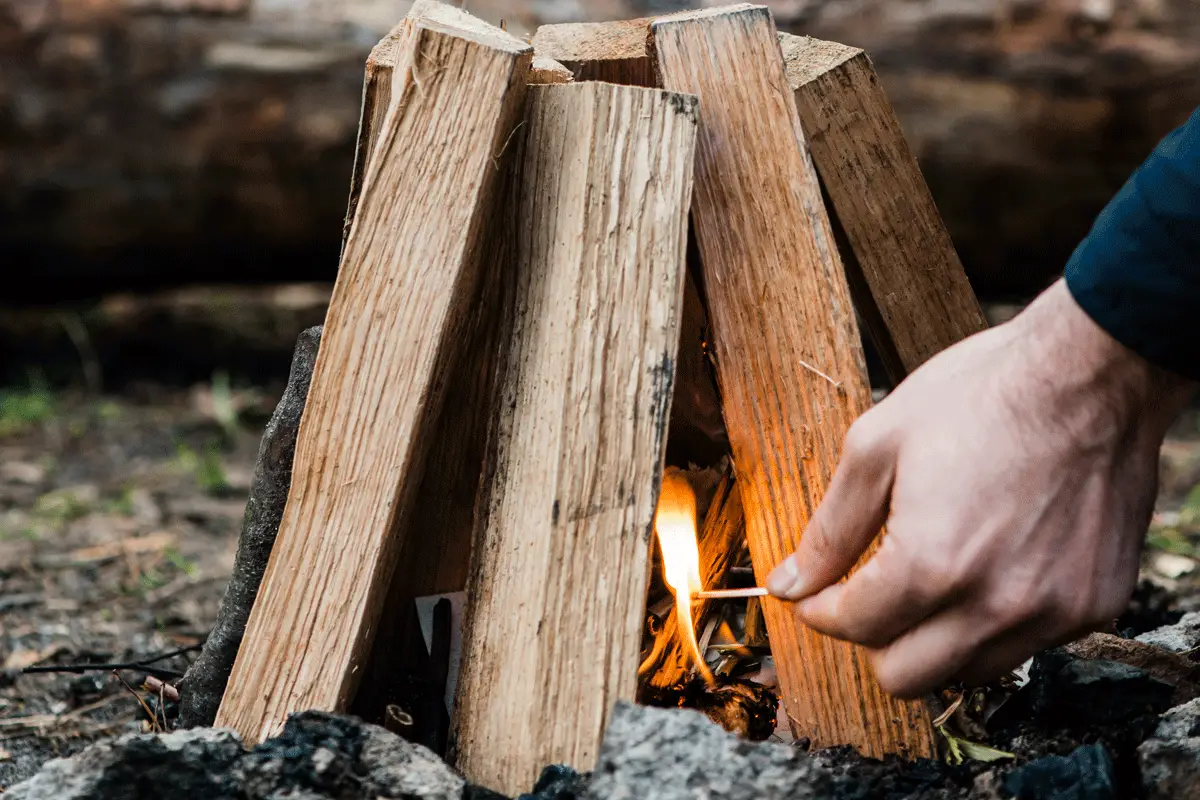Not all flammable materials are the same. Some can start to ignite at a lower flash point, while others take a considerably higher amount of heat to reach the ignition temperature and combustion stage.
So, what’s the case with wood? At what temperature does wood ignite and become combustible?
This guide explains the flash point of wood, the ignition temperature, and the combustion temperature of wood to remain burning. It also provides a list of common wood materials and their average ignition time.
Wood Flash Point
The flash point of wood is around 482-572°F (250-300°C) depending on wood type and moisture content. This is the lowest temperature at which wood vapors will ignite momentarily when exposed to a flame.
Wood Ignition Temperature
The ignition temperature of wood is around 572-752°F (300-400°C) depending on the type of wood and how decayed it is. This is the lowest temperature at which wood will self-sustain combustion without an external ignition source.
Wood Combustion Temperature
Once ignited, the wood combustion temperature is around 752-1292°F (400-700°C) depending on various factors. This is the temperature range at which wood actively burns and releases heat.

Most Common Types of Wood and Their Ignition Temperature
To get a more precise idea of what temperature wood ignites, you need to consider its species. Here is a list of common types of wood with their average ignition temperature and time to reach combustion.
| Wood Type | Ignition Temperature | Ignition Time |
| Beech | 698-937°F (370-503°C) | 39-46 seconds |
| Cherry | 811-1009°F (433-543°C) | 37-54 seconds |
| Pine | 811-1036°F (433-558°C) | 27-61 seconds |
| Oak | 847-951°F (453-511°C ) | 57-119 seconds |
| Maple | 739-915°F (393-491°C) | 56-87 seconds |
| Ash | 654-908°F (346-487°C) | 23-59 seconds |
Factors that Affect the Flash Point and Ignition Temperature of Wood
The ignition temperature of the wood varies from one species to another. However, the type of wood is not the only factor that affects the flash point at which the wood ignites and burns.
Several factors significantly influence the flash point and ignition temperature:
Wood Properties
- Species: Different wood species have varying chemical compositions, particularly the presence of cellulose, hemicellulose, and lignin. Hardwood with higher lignin content generally ignites at higher temperatures than softwood.
- Moisture Content: Wet wood requires more energy to vaporize water, raising its flash and ignition points. Dry wood, conversely, ignites more readily due to readily available flammable vapors.
- Density: Denser woods like oak pack more fuel per unit volume, leading to potentially higher ignition temperatures compared to less dense woods like pine.
Environmental factors
- Temperature: Ambient temperature can affect ignition. Preheated wood requires less additional heat to reach its flash or ignition point.
- Oxygen Availability: Sufficient oxygen is crucial for combustion. Limited oxygen raises ignition temperature and can even prevent it altogether.
- Heating Rate: Rapid heating can lower the ignition point by quickly vaporizing flammable components. Slower heating allows for heat dissipation, potentially raising the ignition point.
Other factors
- Extractives: Some wood species contain natural oils or resins that can act as accelerants, lowering flash and ignition points.
- Surface Treatments: Paints, varnishes, or other coatings can alter flammability depending on their composition and thickness.
- Impurities: The presence of foreign materials like dust or debris can affect flammability, potentially lowering ignition temperature.
Remember: These wood flash point and ignition factors interact and affect each other. It’s crucial to consider the combination of these elements when assessing wood flammability and implementing fire safety measures.
Frequently Asked Questions
How can I determine the flash point or ignition temperature of specific wood?
Due to varying factors, professional testing is recommended for accurate results. General values based on wood type and moisture content can be found in research or technical resources on wood species.
Does combustion temperature affect the amount of heat produced?
Yes, higher combustion temperatures generally release more heat per unit of wood. Factors like airflow and burning efficiency also influence heat output.
Can wood spontaneously combust?
Yes, under specific conditions like prolonged exposure to heat sources in poorly ventilated spaces.
How can I make wood more fire-resistant?
Fire retardants can be applied, but professional treatment is recommended. Always follow manufacturer instructions and safety precautions.
Is there a safe way to burn wood at home?
Always prioritize fire safety. Use only dry, seasoned firewood in properly designed and maintained fireplaces or stoves. Follow safe operating procedures and never leave fires unattended.
Summary About Wood Burning Temperatures
You now know the complete answer to the question, “what temperature does wood ignite?” As you discovered, the wood flash point and ignition temperature vary among wood species and a variety of other factors can affect the combustion temperature of wood materials.
Remember: Safety first! Always handle wood responsibly and prioritize fire safety measures to prevent accidents when igniting wood for a recreational fire.
